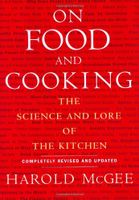Label
All
0
Clear all filters
Cooking Accelerates Enzyme Action Before Stopping It
Appears in
By Harold McGee
Published 2004
Because the activity of an enzyme depends on its structure, any change in that structure will destroy its effectiveness. So cooking foods sufficiently will denature and inactivate any enzymes they may contain. One vivid example of this principle is the behavior of raw and cooked pineapple in gelatin. Pineapples and certain other fruits contain an enzyme that breaks proteins down into small fragments. If raw pineapple is combined with gelatin to make a jelly, the enzyme digests the gelatin molecules and liquifies the jelly. But canned pineapple has been heated enough to denature the enzyme, and makes a firm gelatin jelly.
Become a Premium Member to access this page
Unlimited, ad-free access to hundreds of the world’s best cookbooks
Over 160,000 recipes with thousands more added every month
Recommended by leading chefs and food writers
Powerful search filters to match your tastes
Create collections and add reviews or private notes to any recipe
Swipe to browse each cookbook from cover-to-cover
Manage your subscription via the My Membership page
Best value
Part of
Advertisement
Related Recipes
-
-
-
-
Related Reference
-
-
-
-
Advertisement
The licensor does not allow printing of this title



